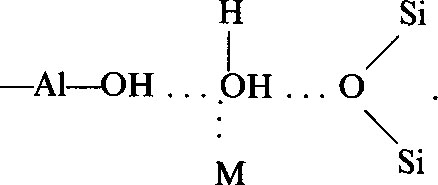Crossref Citations
This article has been cited by the following publications. This list is generated based on data provided by
Crossref.
Mingelgrin, U.
Kliger, L.
Gal, M.
and
Saltzman, S.
1978.
The Effect of Grinding on the Structure and Behavior of Bentonites.
Clays and Clay Minerals,
Vol. 26,
Issue. 4,
p.
299.
Yariv, Shmuel
and
Cross, Harold
1979.
Geochemistry of Colloid Systems.
p.
287.
Mendelovici, Efraïm
Villalba, Rafael
and
Sagarzazu, Amaya
1983.
Selective destruction and differentiation of clay minerals from natural diaspore admixture by mortar grinding.
International Journal of Mineral Processing,
Vol. 11,
Issue. 2,
p.
131.
Mendelovici, E.
and
Sagarzazu, A.
1985.
The use of RbCl disks for the infrared spectroscopy detection of hydrated and dehydrated halloysite in mixtures with kaolinite.
Clay Minerals,
Vol. 20,
Issue. 4,
p.
493.
Yariv, S.
and
Shoval, S.
1985.
Infrared Spectra of Sodium Salts in CsCl Disks.
Applied Spectroscopy,
Vol. 39,
Issue. 4,
p.
599.
Schrader, Malcolm E
and
Yariv, Shmuel
1990.
Wettability of clay minerals.
Journal of Colloid and Interface Science,
Vol. 136,
Issue. 1,
p.
85.
Yariv, S.
Nasser, A.
Deutsch, Y.
and
Michaelian, K. H.
1991.
Study of the interaction between caesium bromide and kaolinite by differential thermal analysis.
Journal of Thermal Analysis,
Vol. 37,
Issue. 7,
p.
1373.
Yariv, Shmuel
1992.
Modern Approaches to Wettability.
p.
279.
Yariv, S.
1996.
Thermo-IR-spectroscopy analysis of the interactions between organic pollutants and clay minerals.
Thermochimica Acta,
Vol. 274,
Issue. ,
p.
1.
Yariv, S.
Lapides, I.
Michaelian, K.H.
and
Lahav, N.
1999.
Thermal Intercalation of Alkali Halides into Kaolinite.
Journal of Thermal Analysis and Calorimetry,
Vol. 56,
Issue. 2,
p.
865.
Frost, Ray L.
Horváth, Erzsébet
Makó, Éva
Kristóf, János
and
Cseh, Tamás
2003.
The effect of mechanochemical activation upon the intercalation of a high-defect kaolinite with formamide.
Journal of Colloid and Interface Science,
Vol. 265,
Issue. 2,
p.
386.
FROST, RAY L.
and
KRISTOF, JANOS
2004.
Clay Surfaces - Fundamentals and Applications.
Vol. 1,
Issue. ,
p.
184.
Carmody, Onuma
Frost, Ray L.
Kristóf, János
Kokot, Serge
Kloprogge, J. Theo
and
Makó, Éva
2006.
Modification of Kaolinite Surfaces through Mechanochemical Activation with Quartz: A Diffuse Reflectance Infrared Fourier Transform and Chemometrics Study.
Applied Spectroscopy,
Vol. 60,
Issue. 12,
p.
1414.
Burzo, E.
2009.
Phyllosilicates.
Vol. 27I5b,
Issue. ,
p.
392.
Lapides, Isaak
and
Yariv, Shmuel
2010.
The effect of mechanochemical treatments of sepiolite with CsCl on the calcination products.
Journal of Thermal Analysis and Calorimetry,
Vol. 99,
Issue. 3,
p.
855.
Joo, Yongho
Jeon, Yangjun
Lee, Sang Uck
Sim, Jae Hyun
Ryu, Jungju
Lee, Sungyoung
Lee, Hoik
and
Sohn, Daewon
2012.
Aggregation and Stabilization of Carboxylic Acid Functionalized Halloysite Nanotubes (HNT-COOH).
The Journal of Physical Chemistry C,
Vol. 116,
Issue. 34,
p.
18230.
Oliaei, Erfan
and
Kaffashi, Babak
2016.
Investigation on the properties of poly(l-lactide)/thermoplastic poly(ester urethane)/halloysite nanotube composites prepared based on prediction of halloysite nanotube location by measuring free surface energies.
Polymer,
Vol. 104,
Issue. ,
p.
104.
Kloprogge, Jacob
2019.
Spectroscopic Methods in the Study of Kaolin Minerals and Their Modifications.
p.
243.
Wong, Li Wen
Pasbakhsh, Pooria
Arabi, Amir Masoud
Keeling, John
and
Tan, Joash Ban Lee
2021.
Halloysite nanotubes from various geological deposits: New insights to acid etching and their impacts on products' characteristics.
Journal of Environmental Chemical Engineering,
Vol. 9,
Issue. 5,
p.
106235.
Zhou, Junming
Li, Mengyuan
Yuan, Peng
Li, Yun
Liu, Hongmei
Fan, Wenxiao
Liu, Dong
and
Zhang, Huan
2021.
Partial rehydration of tubular halloysite (7 Å) immersed in La(NO3)3 solution for 3 years and its implication for understanding REE occurrence in weathered crust elution-deposited rare earth ores.
Applied Clay Science,
Vol. 213,
Issue. ,
p.
106244.



